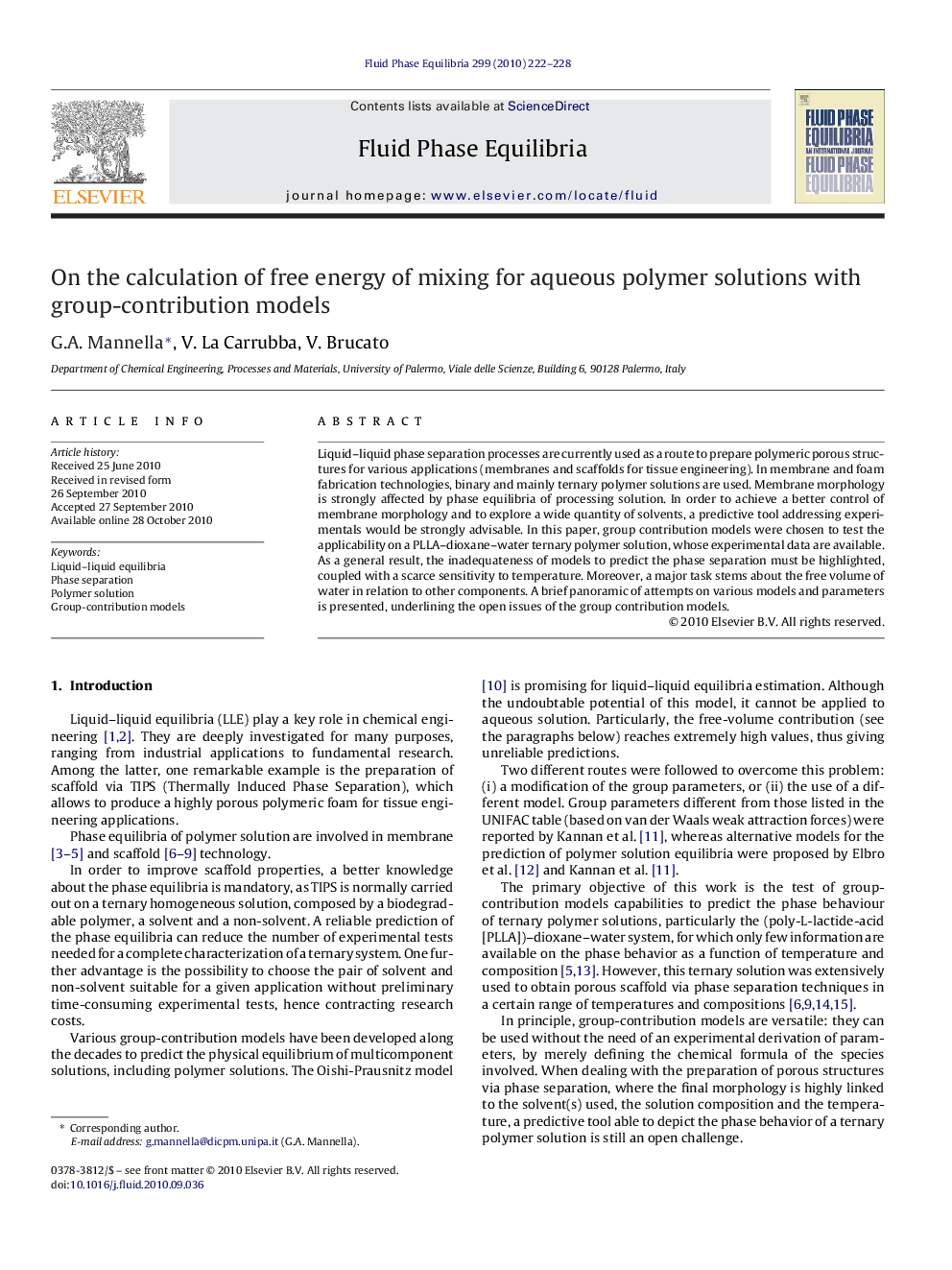| Article ID | Journal | Published Year | Pages | File Type |
|---|---|---|---|---|
| 202778 | Fluid Phase Equilibria | 2010 | 7 Pages |
Liquid–liquid phase separation processes are currently used as a route to prepare polymeric porous structures for various applications (membranes and scaffolds for tissue engineering). In membrane and foam fabrication technologies, binary and mainly ternary polymer solutions are used. Membrane morphology is strongly affected by phase equilibria of processing solution. In order to achieve a better control of membrane morphology and to explore a wide quantity of solvents, a predictive tool addressing experimentals would be strongly advisable. In this paper, group contribution models were chosen to test the applicability on a PLLA–dioxane–water ternary polymer solution, whose experimental data are available. As a general result, the inadequateness of models to predict the phase separation must be highlighted, coupled with a scarce sensitivity to temperature. Moreover, a major task stems about the free volume of water in relation to other components. A brief panoramic of attempts on various models and parameters is presented, underlining the open issues of the group contribution models.
